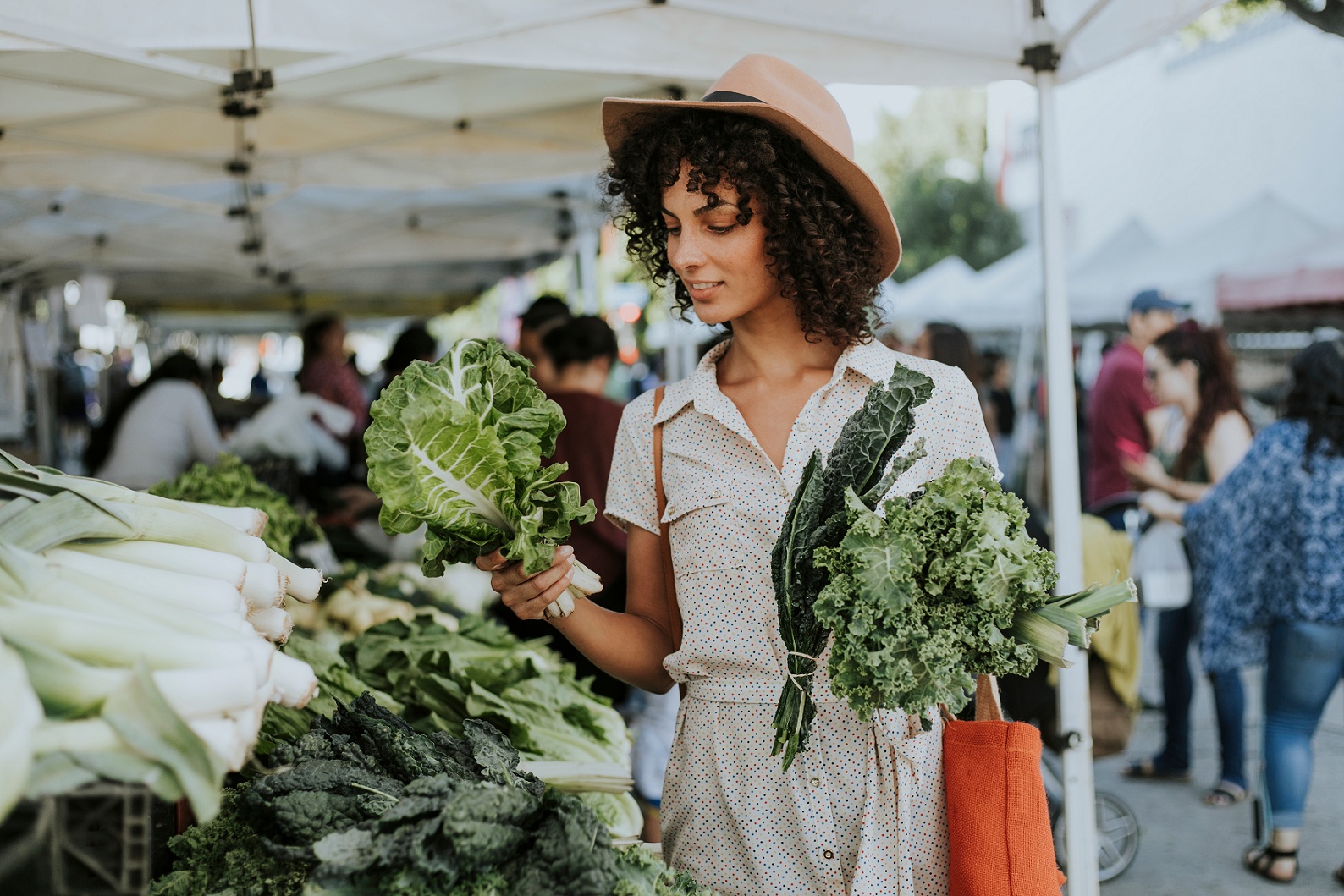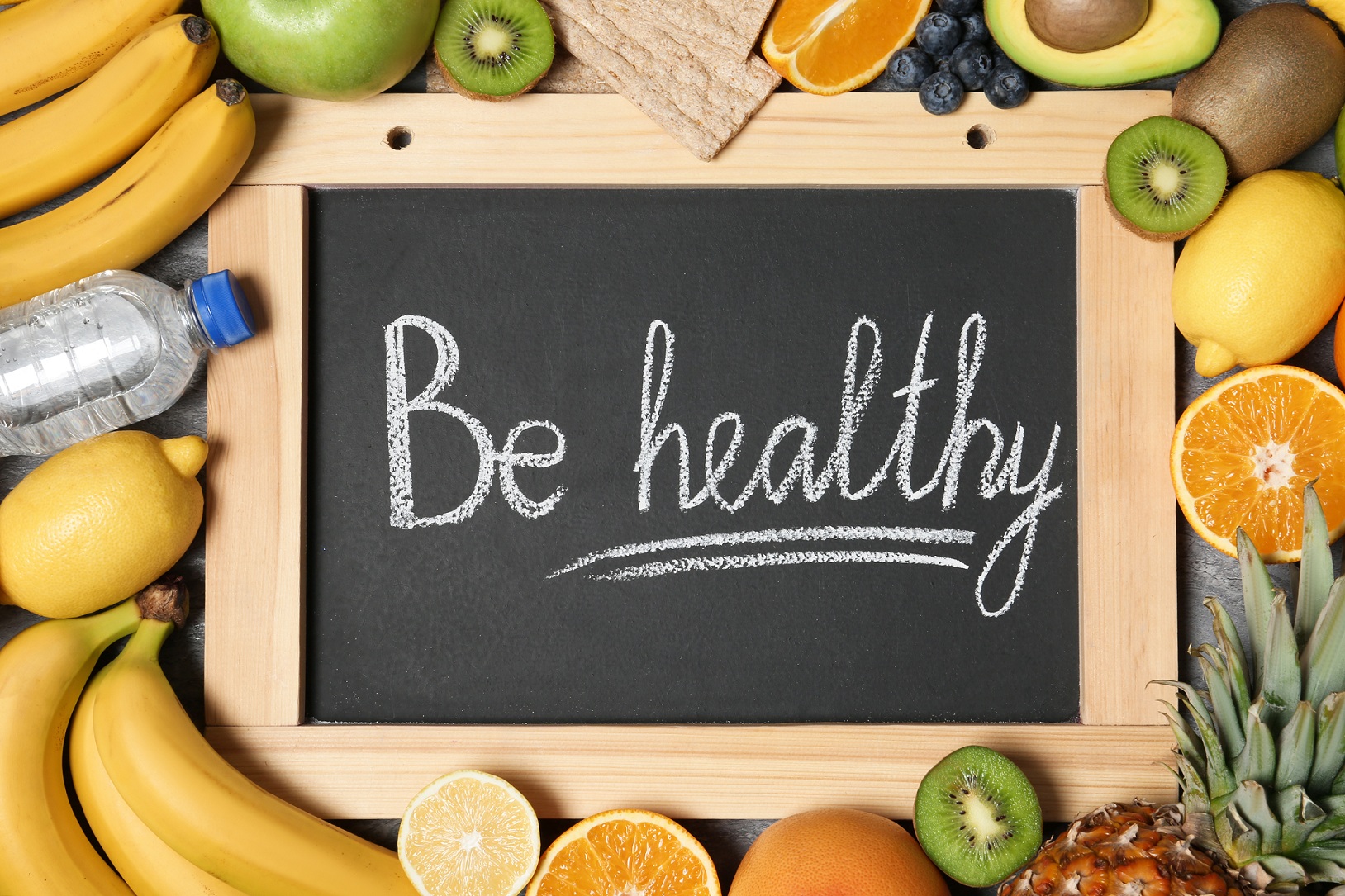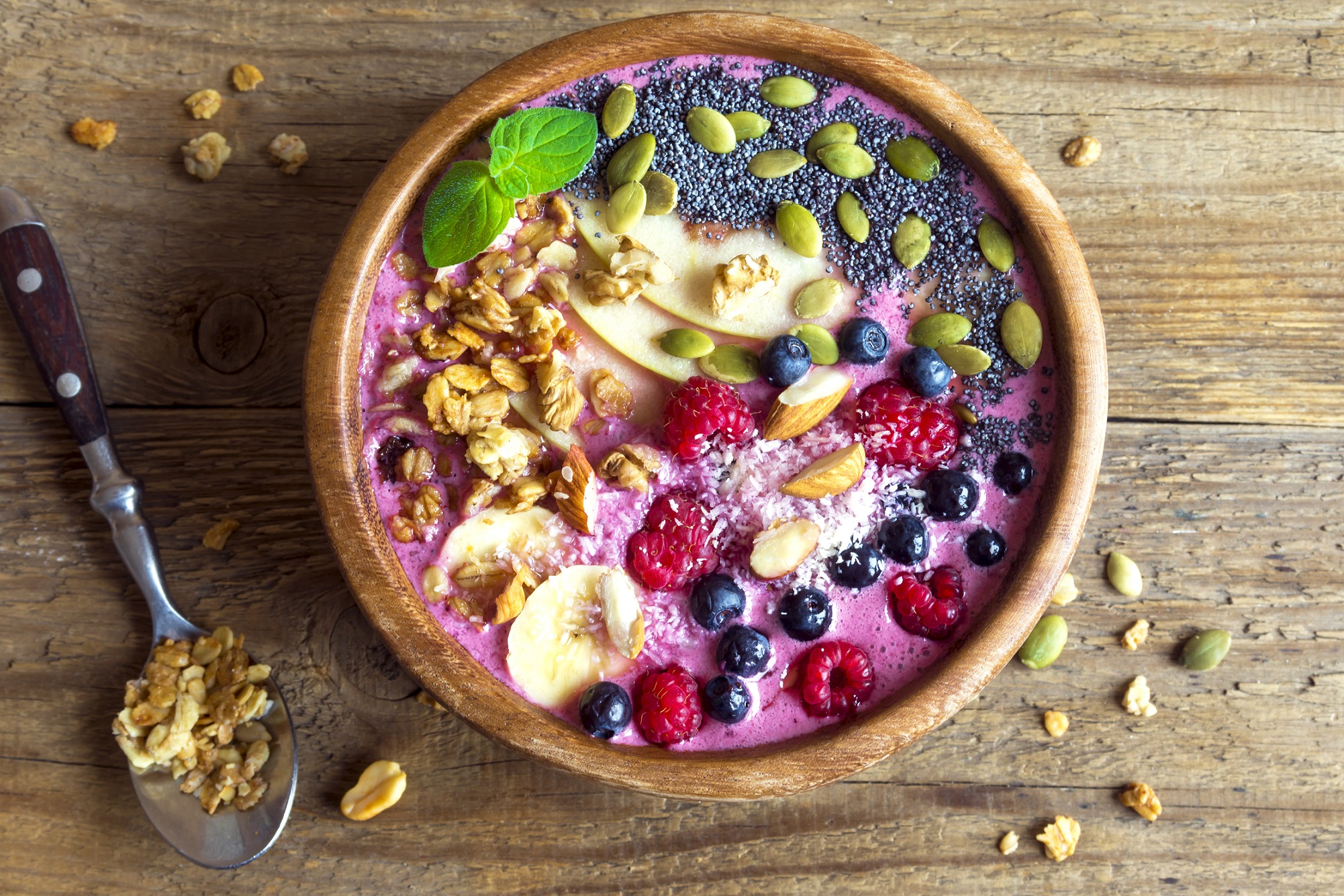-
Superfoods have received a great deal of attention in the media. Health experts are continually expressing the opinion that more people should be incorporating superfoods into their everyday diet. However, there has also been some speculation as to whether some superfoods could actually be harmful to health.
The dangers of kale:
In recent years, kale has become a firm favorite of the superfood crowd. Many people are now eating healthier kale chips rather than fried potato snacks. However, there have also been reports that consuming kale can result in fatigue, hyperthyroidism and weight gain. So, should you be concerned?Kale has been eaten for centuries without causing health problems. However, as with any food, if eaten in excessive amounts, it’s not a healthy balanced diet. The main reason why kale has gained some negative publicity, is due to the interaction of this leafy green vegetable with certain medications. Many people believe that it is the introduction of foreign artificial chemicals which are actually the problem, rather than the kale. Of course, if you are eating large amounts of kale every day of the week, you should consider the phrase “too much of a good thing”.
Excessive consumption of cruciferous vegetables such as kale, has been linked to an increased risk of developing hyperthyroidism. A recent example was the case of a woman in her eighties, she was consuming up to three pounds of raw bok choy, every day, over the course of several months. Consequently she developed a severe case of hyperthyroidism. Medical experts suggest that this is because of the glucosinonlates contained within cruciferous vegetables. Large amounts of these compounds can create goitrin, which can interfere with the synthesis of thyroid hormones.
Eating superfood greens safely:
So, while there is a small chance of danger from green superfood vegetables, they should still form part of a healthy balanced diet. However, some basic precautions can ensure that you eliminate the potential risk of medical complications. The first rule of thumb is to not to eat excessive quantities of leafy greens raw each day. Generally, anything more than eight ounces each and every day could put you at risk. You should limit your leafy greens to one serving each day. With in excess of 10,000 vegetables to choose from, there is a wide selection to keep your vegetable choices varied and interesting.The second guideline is to vary the greens you are eating. There are twenty varieties of leafy greens to choose from, such as kale, bok choy, spinach, and chard, amongst others, so mix it up. There are also approximately fifty other varieties of green vegetables as well, so don’t become obsessed with one particular vegetable. The key to a healthy diet is balance.
Finally, try to eat your greens cooked rather than raw. Although raw vegetables may seem healthier, in the case of leafy greens, the goitrogenic components become virtually negligible if cooked. Severely limit the amount of raw leafy greens in your diet and if raw veggies appeal, consider others such as carrots or celery, which pack a nutritional healthy punch when raw.
The potential danger of superfoods seems to have become a little blown out of proportion. While many people may be tempted by the idea of a magic bullet to cure all ails, a healthy diet is all about balance. You should be aiming to consume a wide variety of fruits and vegetables in all colors to keep your plate looking appetizing and appealing. A balance of colors in all of your superfoods choices will ensure that you obtain a wider selection of vitamins, minerals and antioxidants. This will keep you feeling fitter and healthier in the long run.
-
Many people are aware of the important role super foods play in a healthy balanced diet. However, many people also find the cost of these foods to be prohibitive. Research has supported this perspective, healthier options are generally more expensive than processed or junk foods. This opinion can encourage people into believing that these nutritionally dense super foods, are not readily available in their budget. However, there are many excellent super foods which are perfect for a more modest budget.
1. Banana:
Most people overlook the wonderful nutrition offered by the humble banana. Bananas are readily available in most grocery stores and are usually fairly inexpensive. Considered nature’s ready made snack, the banana is perfectly suited to carry in your bag and packs a great nutritional punch. On average bananas contain significant levels of potassium, fiber, Vitamin C and Vitamin B6. Research has highlighted that a banana can provide a boost of energy when you need a lift in mood and are sweet enough to satisfy sugar cravings.2. Potato:
While the potato is commonly considered a junk food, this is not really accurate. Unless it is served with added fats or deep fried, the potato is actually a healthy food option. The potato contains potassium, fiber, Vitamin B and Vitamin C. They are one of the most readily available and cheapest staples in the grocery store. Eating the potato skin increases the fiber intake, so the best potato options are new boiled in their skins or baked. Sweet potatoes are also an excellent source of nutrition.3. Beans:
There are a wide variety of beans available and most provide similar amounts of nutrients including protein and fiber. Beans are an excellent dietary option to increase overall health and well being, including cardiovascular health. Dried beans are relatively inexpensive and easy to store long term. Only half a cup of beans contains the equivalent amount of protein as a single ounce of meat. The maximum amount of nutritional benefit from beans is to combine them with some type of grain. When consumed together, this creates complete proteins, from non animal sources. These proteins contain all of the essential amino acids necessary for health and well being.4. Cabbage:
Cabbage is often one of people’s least favorite vegetables. This is usually due to it being over cooked or served day after day as part of a school lunch. However, cabbage is actually a very nutritious vegetable. It contains potassium, fiber, Vitamin C and antioxidants. For optimum nutritional benefit, cabbage should be lightly cooked, by steaming or stir-frying.5. Oats
An oat based breakfast is probably the best way to start the day. Oats are filling and contain manganese, magnesium, phosphorus and thiamin. Oats have also been shown to reduce cholesterol and improve digestive health. Oats can be easily made into granola or oatmeal as an inexpensive and healthy breakfast, additionally fresh or dried fruit can be added to boost the vitamin levels and taste.
Trying to maintain a healthy diet on a restrictive budget can be challenging. However, it is not impossible. There are many lower cost healthy foods, including these super cheap superfoods, which can boost the nutrition content of your diet without straining your budget. Adopting a few dietary changes to incorporate these foods will not only provide more energy, but should allow you to feel fitter and healthier. -
Many people are concerned about maintaining a healthy balanced diet. This has meant that a great number of people are interested in incorporating superfoods into their daily diet. While the summer months offer a wide array of delicious and brightly colored berries, to boost the nutritional content of a diet, many people struggle to find superfoods during the colder winter months. However, there is a wide range superfoods that can be easily sourced in winter.
Dried Berries:
While fresh juicy berries are appealing in the summer months, these are often seasonal and unavailable when the weather is colder. However, there is a wide range of dried berries, available in health food and grocery stores throughout the year. Dried berries such as goji, acai or blueberries can make a fantastic addition to your breakfast cereal or as a healthy snack. They are still packed with plenty of nutritional benefits and can add a boost of vitamins to keep coughs and colds away.Frozen Berries:
This is another convenience for the winter months. You can either purchase frozen berries from your grocery store or plan ahead in summer by freezing seasonal fruit. Frozen berries may not be as appetizing to eat on their own, but they can add a great nutritional boost to a smoothie or juice. For example, frozen blueberries are a great stand by to create a delicious smoothie to cheer you up on a cold winter day.Dark Chocolate:
Nothing says winter like enjoying a rich cup of hot chocolate by the fire, but did you know dark chocolate is considered a superfood. You will need to choose a brand which has a high percentage of cocoa solids to gain the optimum health benefits. However, this can be an easy way to enjoy a sweet treat packed with health boosting flavanols. You can either eat the dark chocolate or grate an ounce of dark chocolate into a mug of your preferred milk. Heat this gently over a low flame, stir well to achieve a rich consistency. You can even add in some health boosting spices, such as cinnamon for an even greater nutritional impact. Just be sure not to boil your milk as this will compromise the taste. If you are concerned that the milk is getting too hot, remove it from the heat and stir as the chocolate will continue to melt.Winter Greens:
Winter green vegetables such as cabbage are also powerful superfoods. Cabbage contains a great range of nutrients such as Vitamin B6, manganese and dietary fiber. However, it also has cancer fighting properties and contains phytochemicals which can assist the metabolism of estrogen. While you may have been deterred from cabbage in the past, set aside those school lunch nightmares, as it’s worth revisiting this amazing nutritional powerhouse. Cabbage should be lightly cooked to retain the nutrients and keep it’s delicious flavor. If you still can’t stomach the thought of cabbage, why not look at kale, collard greens, broccollini or Brussels sprouts.Potatoes:
Potatoes have unfairly got a bad reputation. Cooking them in oil, as fries or roasted potatoes, does not optimize their nutritional value. However, the humble potato does provide some great health benefits. If you also eat the skin of the potato, you can gain up to 45% of your Vitamin C daily requirement, in addition to 18% of the recommended daily amount of potassium. Potatoes naturally contain no cholesterol or fat, they are a good source of protein and fiber. Try baking your potato, just avoid smothering it with sour cream or butter for maximum nutritional benefit. If regular potatoes don’t appeal, why not opt for a sweet potato. Just remember to consider the method of cooking to avoid extra calories and fat.The colder winter months can be a challenge to a healthy eating plan. The cool temperatures often encourage comfort eating of carb rich heavy foods. However, by adding winter superfoods to your diet, you should feel happier and healthier, standing more chance of fitting into your bathing suit when the warmer months finally arrive.









